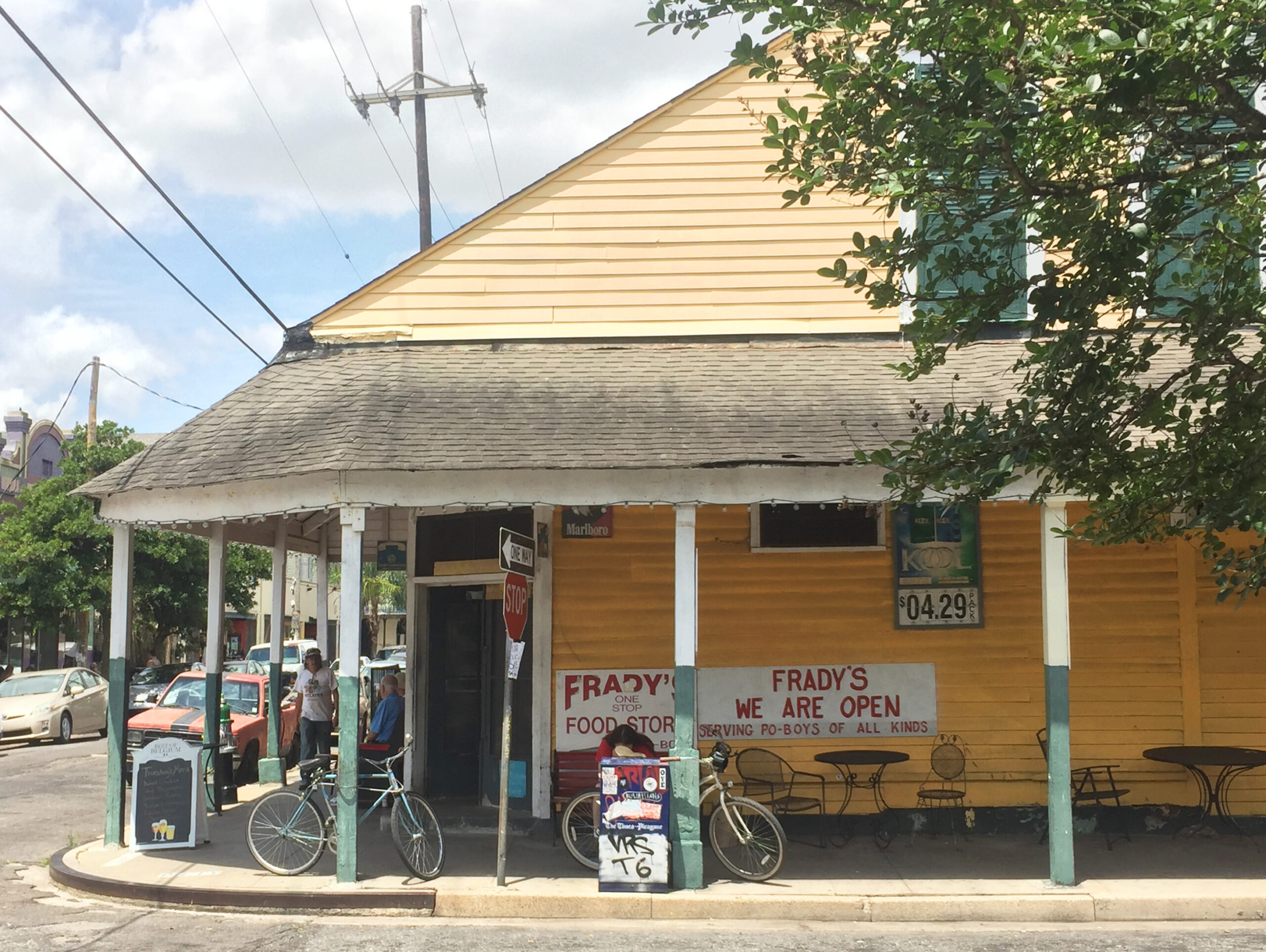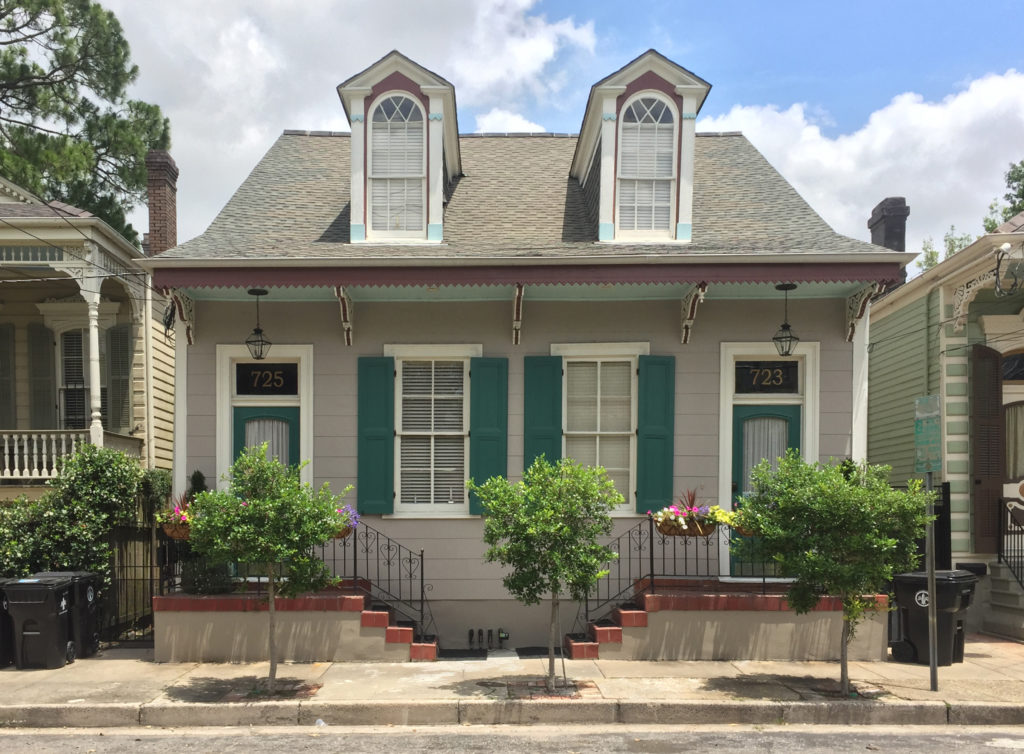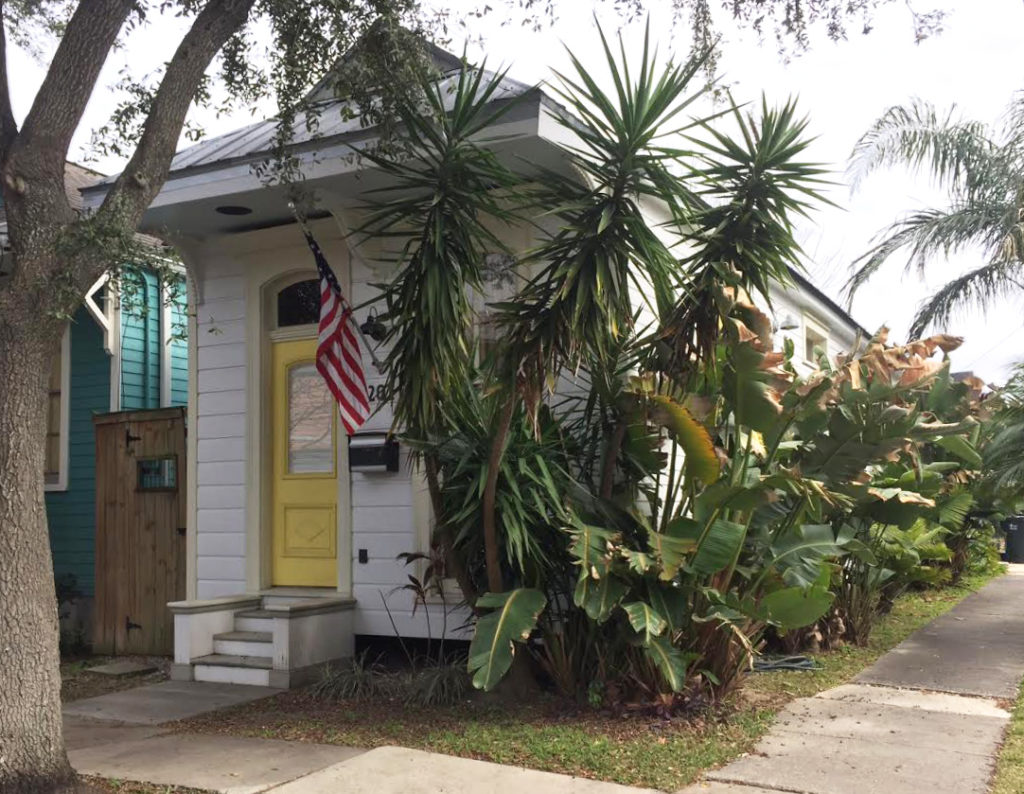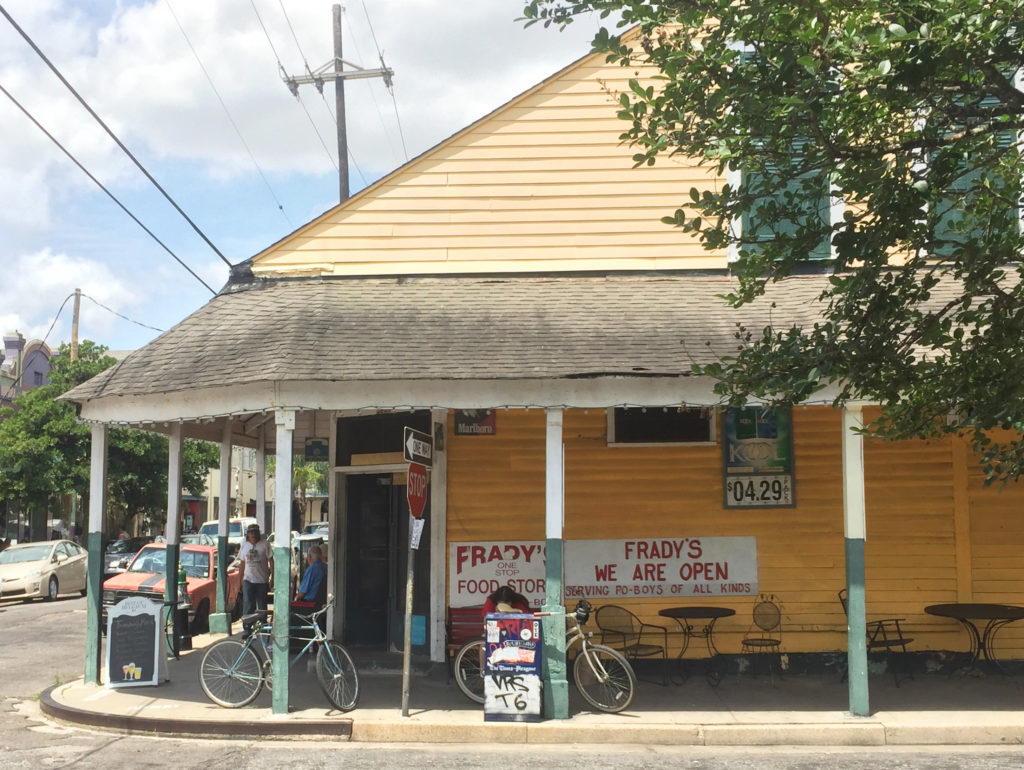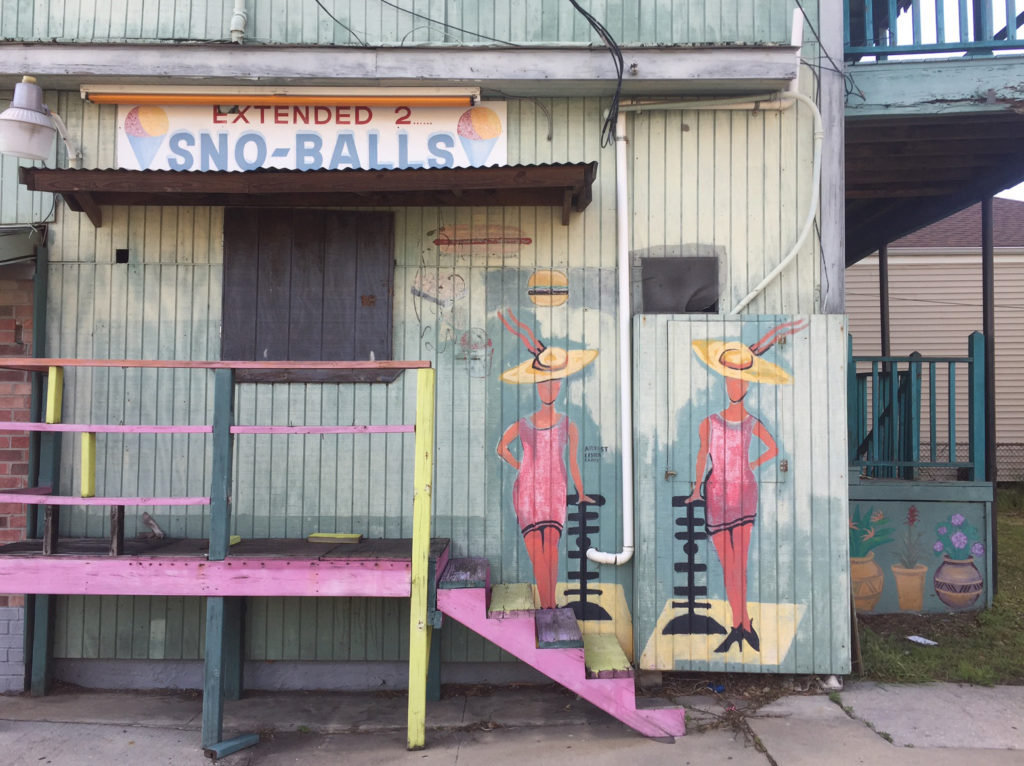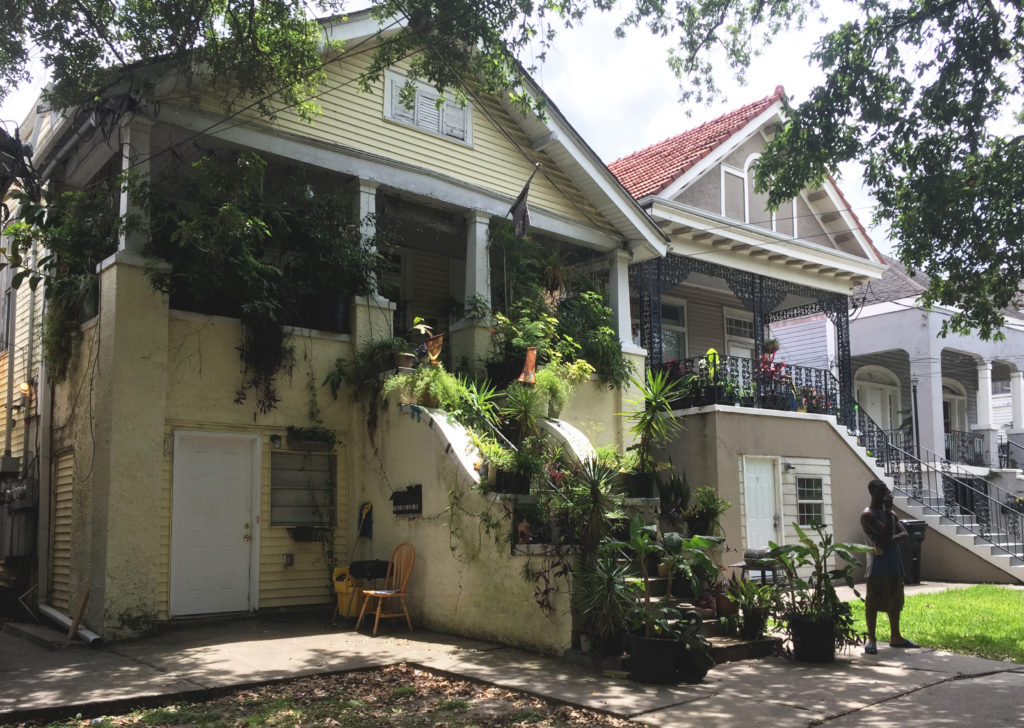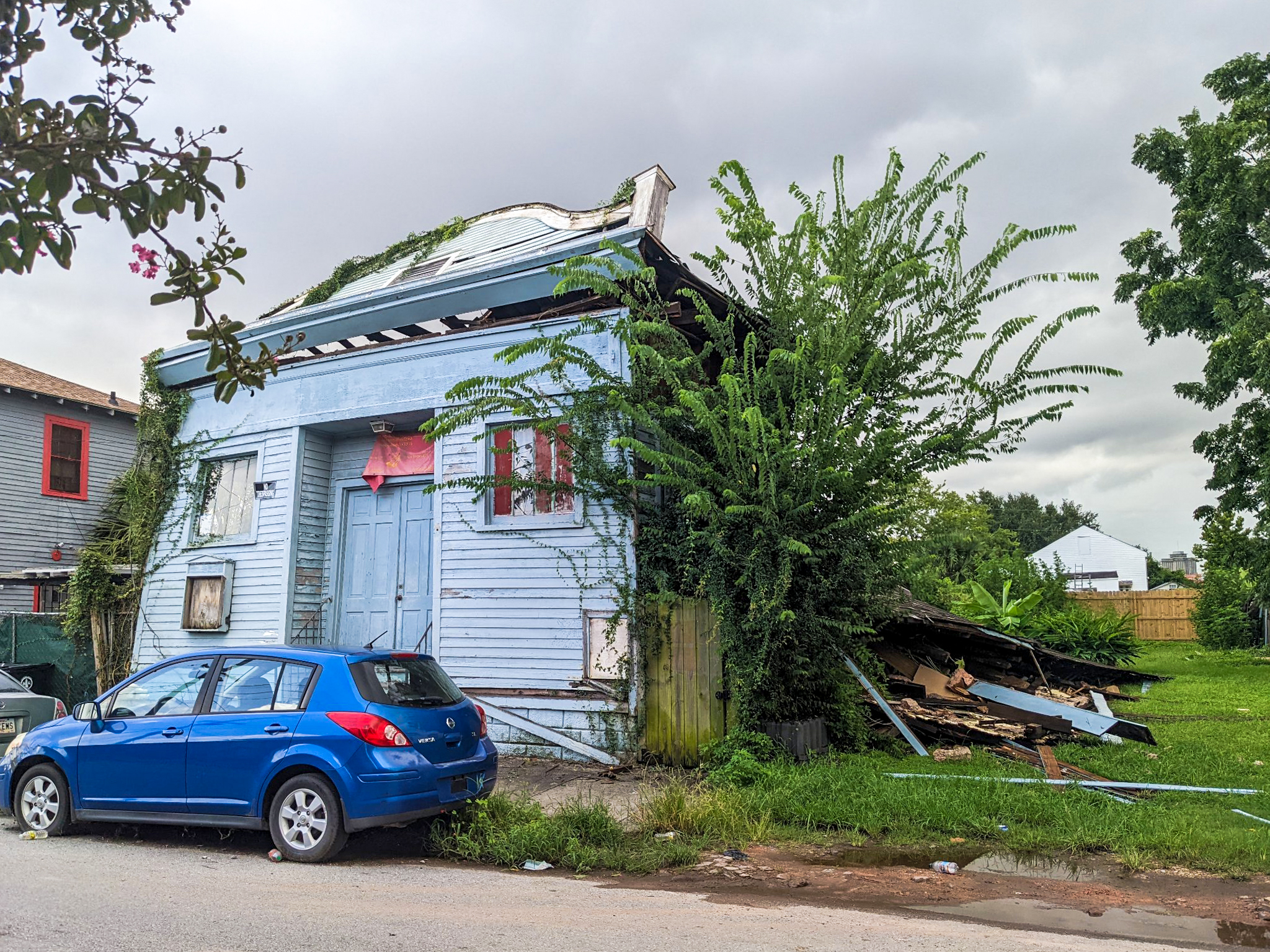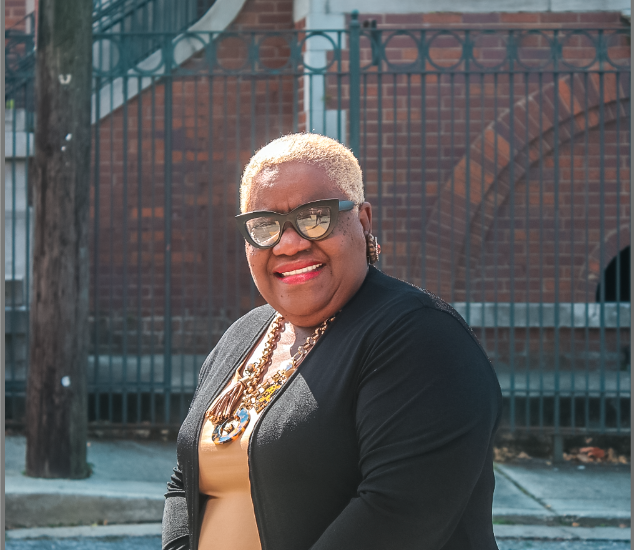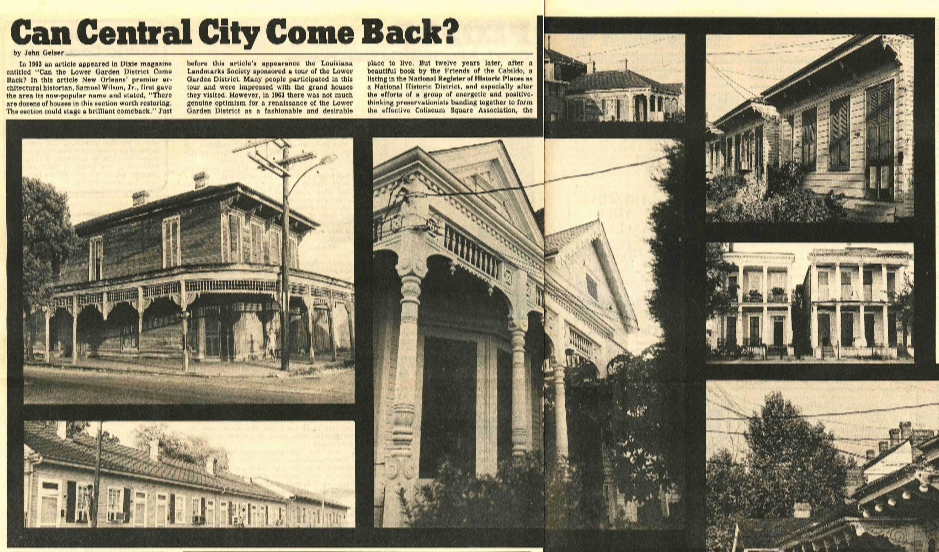New Orleans is a city filled with architectural treasures, from ornate mansions to humble shotgun houses. Our city’s high-style architecture is breathtaking, but the simpler, ever-present vernacular structures help to form the rich architectural fabric of our city. Vernacular architecture is exactly that: the ordinary buildings and spaces that distinguish a place and help you know exactly what city you’re in. Thanks to the fusion of Caribbean, Spanish, French and American styles, New Orleans’ vernacular is immediately identifiable, and utterly unique. Typically shaped by the traditions of local builders instead of architects, vernacular structures reinforce a city’s sense of place. Buildings and spaces gain a social identity and personal significance to the people who occupy those spaces, altering them over time to suit their own needs or tastes. Here’s a list of a few common vernacular types that make New Orleans, well, New Orleans.
One of the earliest architectural forms in New Orleans, the Creole cottage likely originated in the West Indies and was possibly introduced to the city by Haitian immigrants. Popular from the 1790s until the 1850s, the building is found in highest concentrations in the French Quarter and Faubourg Marigny, where a builder could construct a row of several identical buildings. Most examples have direct frontage along the sidewalk (or banquette, as the Creoles called it), with a simple yet functional plan containing four symmetrical rooms without any hallways.
The earliest examples were mostly unembellished, but the simplicity and functionality of the Creole cottage withstood the test of time and allowed for modifications over the years. Often times, you can find a Creole cottage with Greek Revival details or ornate Eastlake-style corbels that date later than the original construction of the home.
Arguably one of the most iconic vernacular building types in New Orleans and the American South, the shotgun house can be found in almost every neighborhood in the city. The long-and-narrow house type has interior rooms arranged linearly, one behind another. The name was famously coined after the notion that someone could fire a shotgun through the front door and have the shot pass clean through the back door without hitting anything. Their construction was popular for over a century in New Orleans, from the 1830s until the 1940s. The versatile building type has many variations ‒ its simplest form is the single shotgun. Take two shotguns and place them side by side with a dividing wall in between and you’ve got yourself a double shotgun. Add on a second story in the back and call it a camelback.
The design of shotgun houses emphasizes social interaction, both inside and out. With rooms arranged one after another without a hallway, the interior offers minimal privacy as family members occasionally need to pass through each others’ rooms to reach other parts of the house. The front of a shotgun will typically have a porch or a stoop where residents can sit in the shade, watch the street, and chat with neighbors and passers-by.
Vernacular architecture isn’t limited to residential examples. Every neighborhood in the city has a quintessential corner store ‒ or restaurant, or neighborhood bar. The building type is widely varied, but typically has frontage along two streets with a main entrance at a 45-degree angle at the street corner, inviting pedestrians from both sides of the street to venture under the shade of an awning or to step inside the business. They are tried-and-true mixed use, often times containing a residential portion in the back or a second story where the owner of the business and their family would live.
Corner stores are frequently embedded in more residential surroundings, creating a social space where community members from all walks of life can gather to socialize and grab the necessities: gum, cigarettes, a beer, po-boys, you name it. It’s no surprise that these vernacular structures contain some of the city’s best lunch counters, bars, and restaurants.
A less architectural example of New Orleans vernacular, but quintessential to our streetscapes nonetheless, hand-painted signs can be found across the city. Often found outside of corner stores, the functional art form advertises everything from law offices to car washes. The distinctive look is unmistakably New Orleans: bright paint colors, hand-painted text alternating between script and block-lettering, eccentric illustrations and cheeky phrases. A law office serving cold drinks? We must be in New Orleans.
The signage is a local tradition kept alive by a handful of artists, many who are self-taught, who explore their own style and make personal variations on the vernacular tradition. Take Lester Carey for example, whose paintbrush has spruced up blank walls in neighborhoods city-wide. He passed away earlier this year, but he has surely left his mark on the city’s streetscapes, and his work continues to draw fans. Check out the Signs & Vines art show opening this weekend, with art that pays tribute to Carey’s painted signage and draws inspiration from New Orleans’ vernacular architecture.
They might not the earliest examples of raised homes in New Orleans (raised center-hall cottages were popular during the mid-19th century), but raised basement homes are among the city’s most unique and visually striking. A local spin on the Craftsman style that was common during early 20th-century, the form of the raised basement home was shaped mostly as a vernacular response to the environmental conditions of New Orleans, elevating the main living space above potential floodwaters in low-lying neighborhoods. You can find the highest concentrations of this house type in Broadmoor, Carrollton, and Mid-City.
In any other place, a full flight of stairs stretching from the sidewalk to a second story front door might seem unorthodox, but the unusual construction was necessary and wise for a city with a high water table and susceptibility to flooding. Architecturally versatile, many of these homes now serve both commercial and residential functions, with businesses frequently occupying the bottom floor and residences occupying the upper floors.




